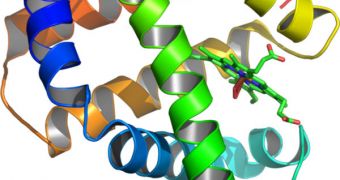All the important cellular processes can only take place following interactions amidst proteins, experts know, and so the nature of those interactions is something that we simply must know. A group of scientists has now produced a new method of investigating these connections.
Protein interactions take place only at the site where two or more of the molecules meet and touch each other. Studying these sites is nearly impossible with existing techniques, due to their large numbers.
A conservative study estimates that there are at least a thousand structurally-distinct protein-protein interfaces in the human body alone, and hints at the fact that the simple physics of the proteins dictate their overall structure.
The new research is now being praised as one of the first systematic studies ever to be conducted on this issue. Many experts steer clear of studying protein-protein interfaces due to the challenging nature of the work ahead.
But this research promises to shed more light even on “promiscuous” proteins, thusly called because they have the tendency to bind to many other proteins at the same time, rather than just one.
One of the most important, immediate applications that springs to mind when seeing this study is producing advancements in the way drugs are designed.
There is currently a vast array of chemical compounds that are being used by healthcare experts to target these protein-protein interactions, but many of them are unsuccessful because no one really knows all the intricacies of these molecular communication patterns.
“Proteins and the rules of protein-protein interactions are the result of very simple physical principles,” explains the director of the Georgia Institute of Technology Center for the Study of Systems Biology, Jeffrey Skolnick.
“In this study, we set out to characterize the nature of the interfaces – the structures of the interfaces – in all known protein structures,” he goes on to say, quoted by Science Blog.
“We wanted to ask how much of the interface could be explained purely by the structural features of the proteins without involving evolution or intelligent design,” the researcher adds.
Details of the investigation, which was sponsored by the US National Institutes of Health (NIH), were published in the December 13 early online issue of the esteemed journal Proceedings of the National Academy of Sciences (PNAS).

 14 DAY TRIAL //
14 DAY TRIAL //